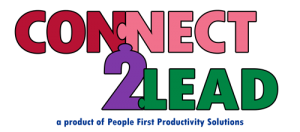Why Failing Should Be One of Your Leadership Development Goals
Failure is healthy. For leaders, it's an important part of development.
It doesn't feel healthy when it's happening. But, like all good medicine, the right dosage of failure is occasionally necessary.
Aversion to failure and the reluctance to acknowledge it holds leaders back.
Fear of failure leads to an endless series of compromises. An epidemic of unrealized potential paralyzes entire teams.
When leaders are unwilling to fail they stymie risk-taking, experimentation and innovation. Not modeling a willingness to fail demonstrates to others that failure is not an option. So everyone plays it safe.
Leader who spin their failures breed a culture of denial and deflection. Instead of modeling an ability to learn and grow and try again, these leaders convey that looking good matters more than trying to improve.
Failing Forward is One of the Leadership Development Goals that Liberates Learning
A learning culture places a premium on the acts related to learning. Leaders who are learners publicly admit that they don't have all the answers. They seek out others' opinions and input. They participate in learning activities and have no pretense of having all the answers.
Most important of all, leaders talk about their failures. They focus on their pride in those who learned and grew, not on their disappointment in those who did not succeed. And they put themselves out there in the same way, taking risks and turning their failures into learning experiences.
Strong leaders actually set goals related to learning. They set goals to experiment, knowing they will fail and seeing value in doing so. They don't cover up their mistakes. They share them so others can learn from them, too.
When a leader models a willingness to fail and learn and grow, others will be more willing to do the same.
Leadership Development Goals Must Focus on Learning, Not Just Performance
Vulnerability. Learning, failing, trying again, maybe failing again... It takes courage and confidence to be this vulnerable. Especially when others are watching.
What people remember, though, isn't the failure. It's the tenacity to try again. It's the comeback. It's the way failure is handled that makes the difference.
People who focus exclusively on performance hit a career wall. Being perfect in all you do eventually exposes resistance to learning and growing. The most successful leaders are those who have stretched themselves, unafraid to flounder as they learned something new.
It helps to own your failure. When you own it. you are in control of it and can determine what you wish to do with it. When you acknowledge your own failure, you can invest time and energy in building on it rather than wasting time and energy in a defensive mode.
Performance counts. But it's short-term thinking to stay hyper-focused on today's performance. Learning goals set up long-term success. Leaders who expect continual learning and growth set goals accordingly. They ask others to do the same, and they back up those requests by making learning part of the job.
Embed People-Building in Your Leadership Development Goals (Warning: people need to fail in order to grow...)
Leaders inspire others to become leaders, too. Leaders build the organization by building the people inside it. Leaders focus on the future and know the only sustainable business model is one that leverages leadership at every level.
To build leaders, you may need to allow more people to fail more often. Experience is the best teacher. Innovation comes from experimentation. Growth comes from having a variety of experiences -- good and bad.
A leader's goals should include challenging others and giving them a clear path to succeed, sometimes to succeed by failing forward. Trying, failing, learning, growing and trying again. Lather, rinse, repeat.
By de-stigmatizing failure, leaders will see more success.
Looking to Set Leadership Development Goals that Will Make the Greatest Impact? Start by:
Deb Calvert is a certified Executive Coach, Certified Master with The Leadership Challenge® and architect of leadership development programs for nearly 100 organizations. She helps leaders at every level discover and achieve their leadership goals. Deb is the founder of People First Productivity Solutions, building organizational strength by putting people first since 2006.
